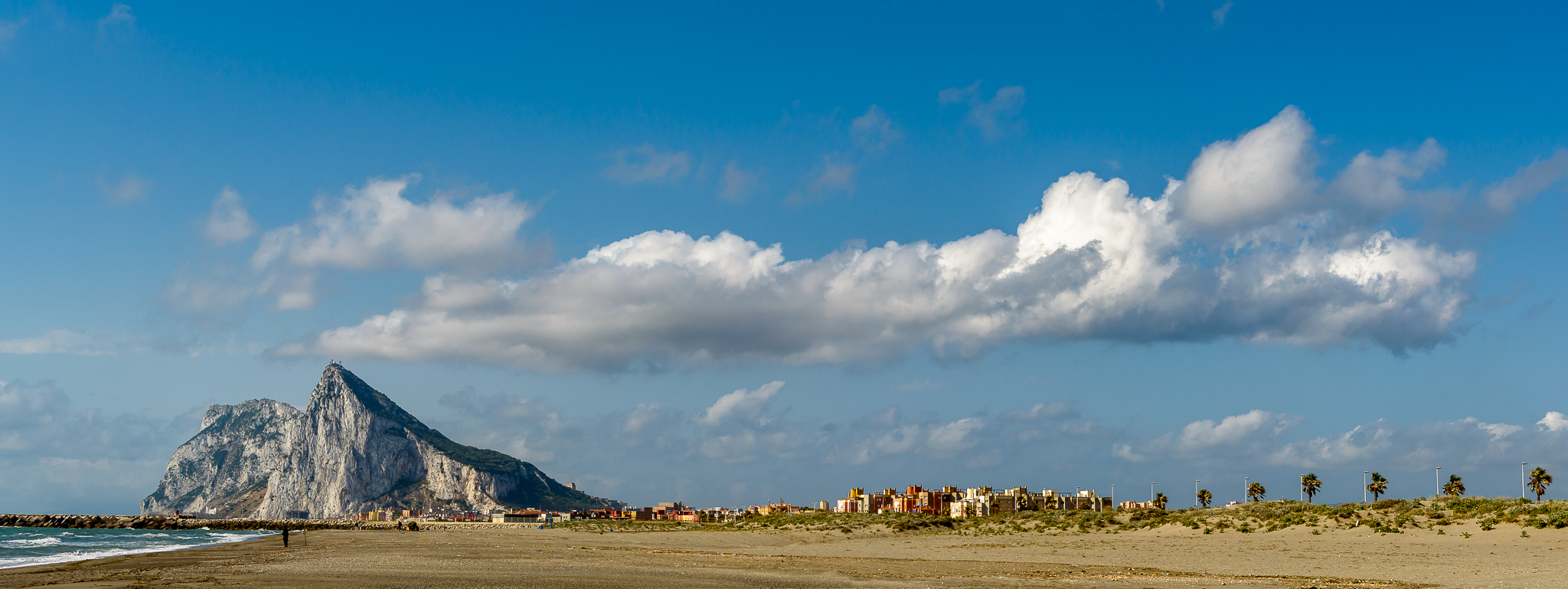Gibraltar in all weathers – a microclimate – posted 21st August 2018 (MeteoGib)
Reference is often made to Gibraltar’s Microclimate and, for those people resident in Gibraltar, it is all too obvious as they live with it constantly. But what exactly is a Microclimate and what does it actually mean for Gibraltar and the people who live on the Rock all year round?
So what is a microclimate? A microclimate is defined as the climate of a small area, whether covering several metres or a few kilometres, which differs from its surrounding area. This difference in climate could be due to any number of factors, for instance a difference in temperature as in a “frost hollow” or rainfall as in lying in what we call a “rain shadow” to the lee of a mountain range.
When first thoughts go to Gibraltar’s microclimate, it may be of how its weather generally differs from its Spanish and Moroccan neighbours. As a country, Gibraltar’s climate is very typical of the Mediterranean, but there are differences driven by its unique position in the Strait with high mountain barriers flanking it to the north and south. To the north the Sierra Nevada and other smaller mountain chains of Andalucía, while to the south the Rif and Atlas mountains of Morocco, which channel and funnel the wind flow through the Strait of Gibraltar. Of course Gibraltar is also surrounded by water on all but its northern boundary, and so this too comes into play.
So what is a typical Mediterranean climate? Text books would tell us that it consists of warm, wet winters and hot dry summers, and yet for those of us who live in Gibraltar or have experienced a summer here, we are well aware that Gibraltar is rarely as hot as its neighbours. You may also have spent many a sleepless night cursing the humid and uncomfortable nights that a spell of endless Easterly winds can bring. Of course when winter comes, it is the opposite and we welcome the frost free nights; frost, as far as Gibraltar records show has only been officially registered once at low level and for this you have to wade back in the records to 1870.
We are lucky in Gibraltar to have such a long running record of weather observations, with its rainfall data deemed one of the oldest in the world dating back to 1790, and for that we have the Royal Engineers to thank for first establishing these. However, it is interesting to note that even long before this there was already an awareness that Gibraltar’s climate differed to its neighbours. In Colonel John Drinkwater’s account of the Great Siege of 1779 to 1783 (Drinkwater, 1905) he notes “The cold in winter is not so excessive as in the neighbouring parts of the country. Snow falls but seldom and ice is a rarity; yet the Granadian mountains of Spain, and the lofty mountains in Africa, have a snow lying on them for several months.”
So it is clear that Gibraltar’s climate differs from its neighbours, but one would also say that it possesses its own mini microclimate, as not only can it differ in general from its Spanish and Moroccan neighbours, but it can also differ vastly within the few kilometres that span the length and breadth of the Rock. As I mentioned previously, the levanter also becomes one of the main drivers. Have you ever battled against a strong levanter blowing down Devils Tower Road, only to turn the corner and find the wind mysteriously fall calm at Catalan Bay? Have you ever left work in town under a black and drizzling levanter to find the sun shining at home in the South District. Have you ever been stuck working in town in the summer desperate to join the bathers at Eastern Beach, only to hear your family have packed up and gone home after being fogged out? There are so many differences which span our beautiful Rock which go to make up this microclimate, the levanter bringing marked variations in temperature, humidity and sunshine.
We also have the Rock itself, standing proud in its surroundings and deflecting the wind flow around it – as previously mentioned with the winds on the East side, but also with the rotor effects which on a tricky day could see you making an unexpected diversion to Malaga Airport.

